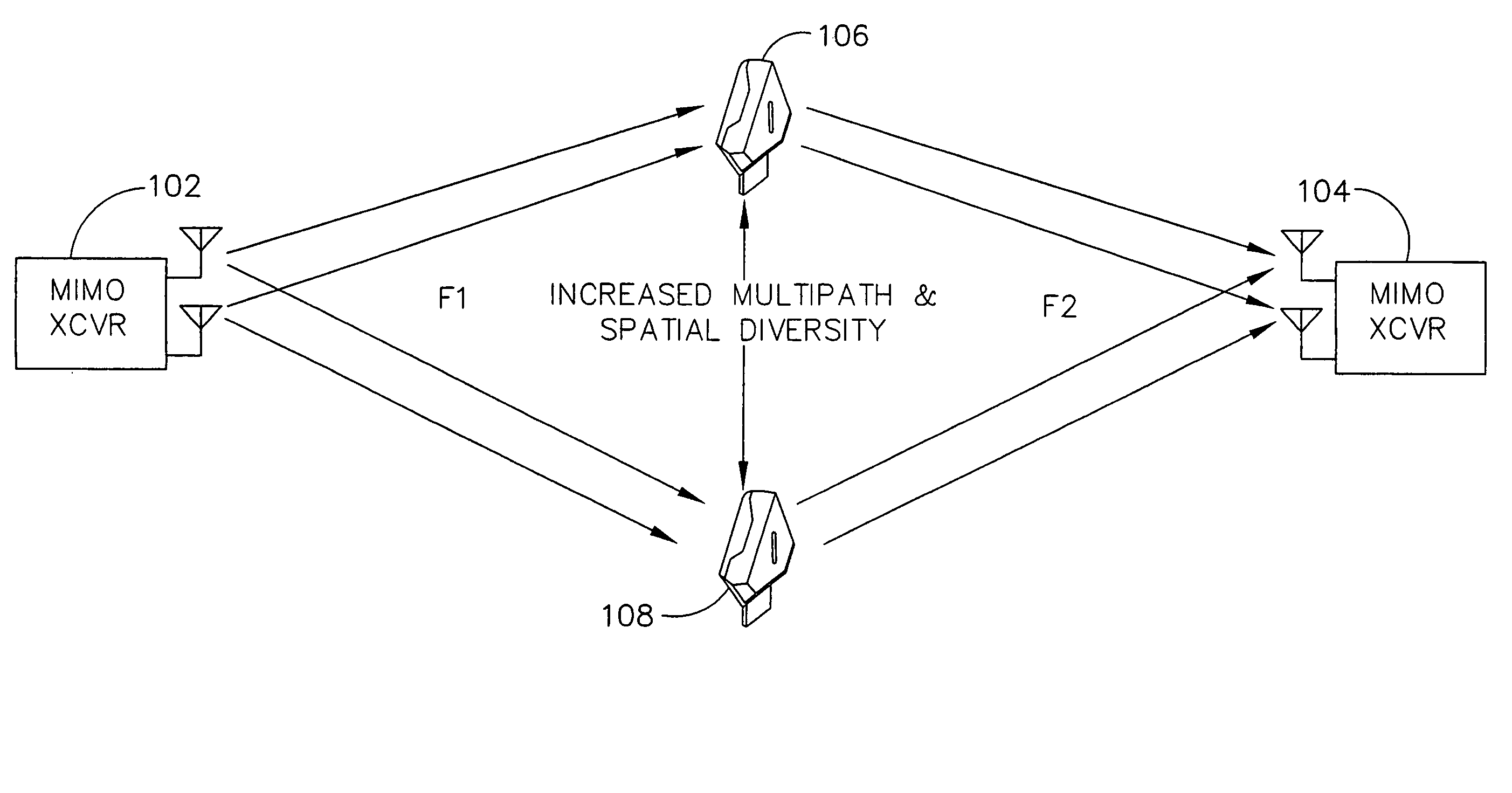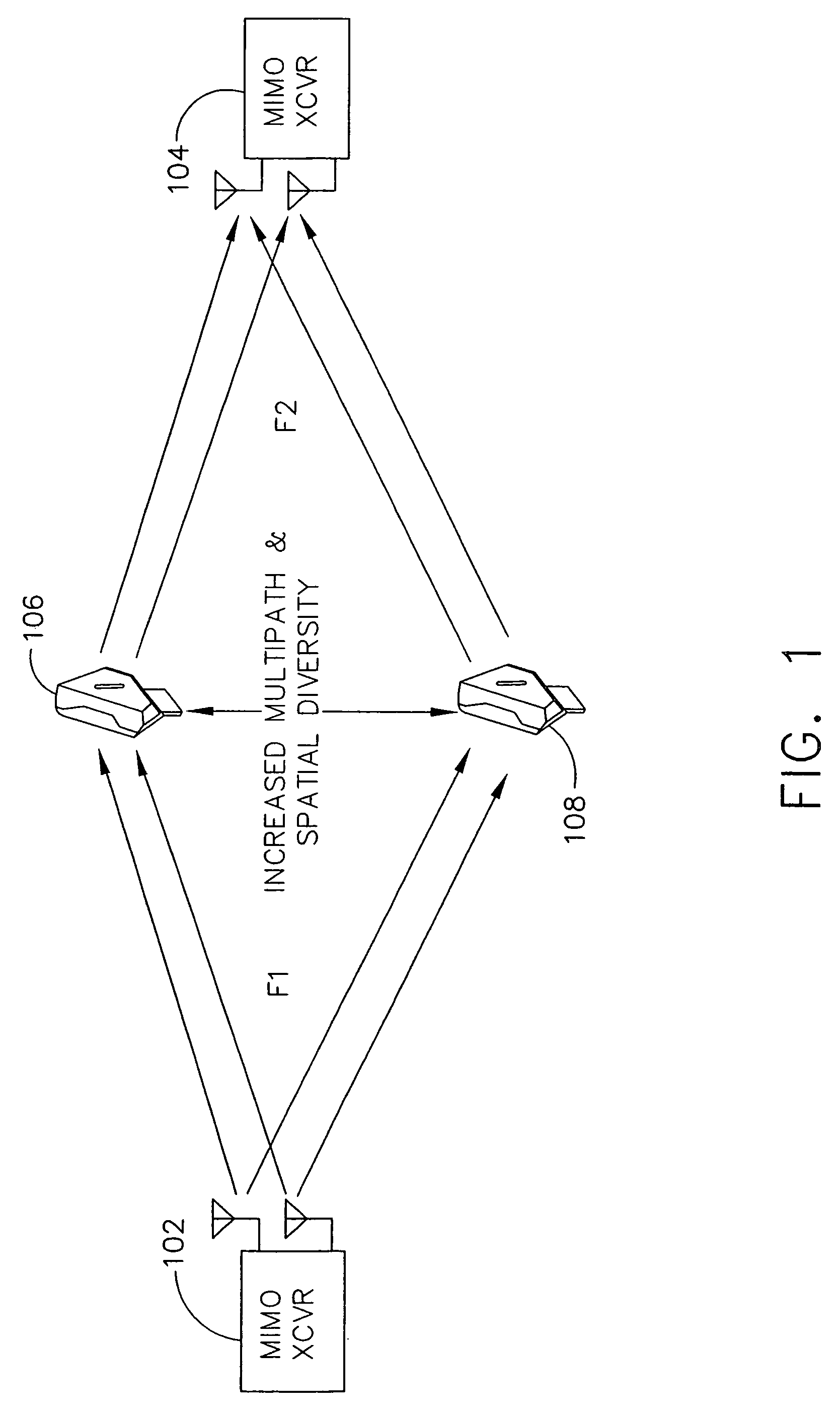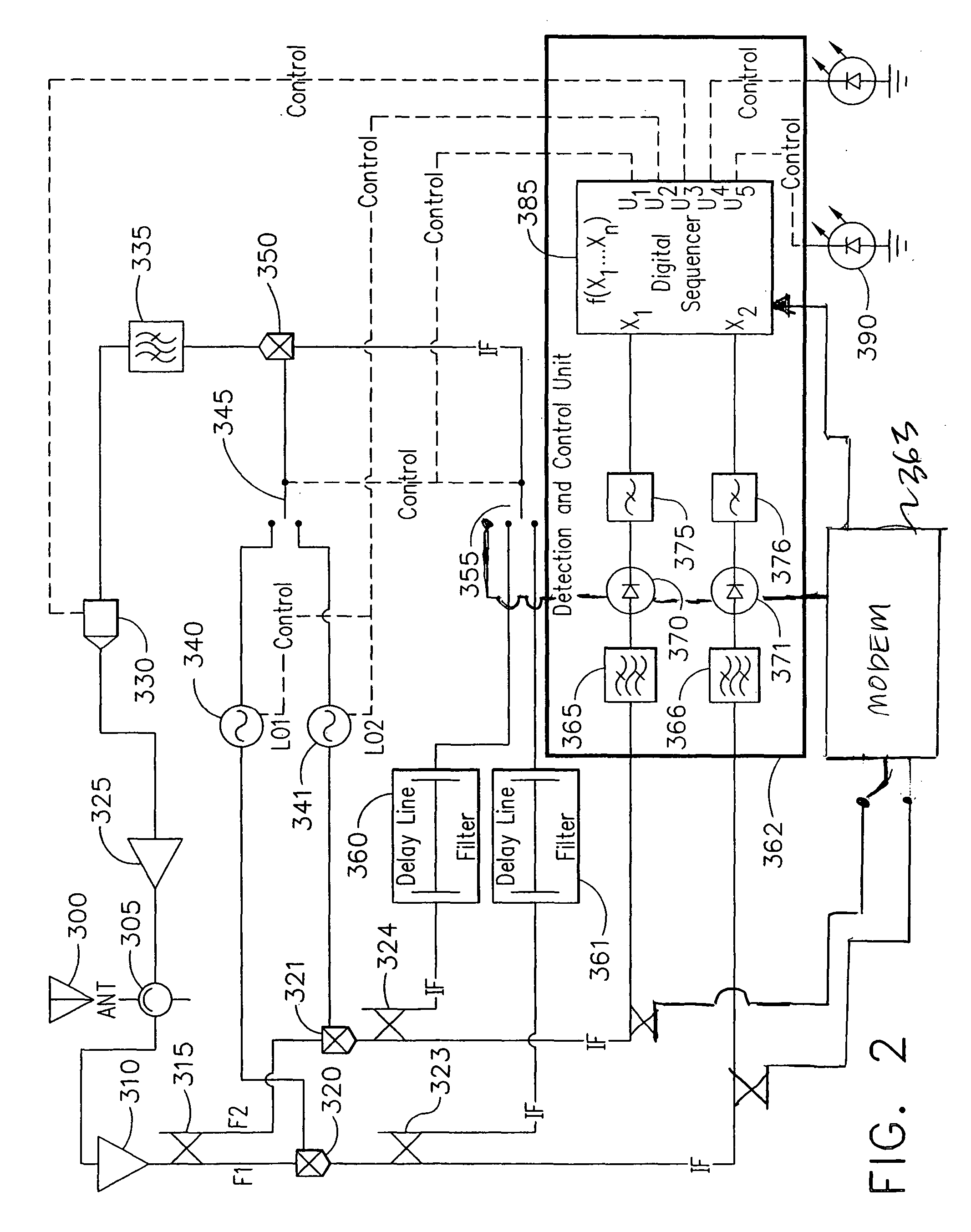Physical layer repeater configuration for increasing MIMO performance
a repeater and physical layer technology, applied in the field of wireless communication, can solve the problems of lack of performance, rarely realized performance levels, and spontaneous generation and transmission of wireless network nodes, and cannot be temporally predictabl
- Summary
- Abstract
- Description
- Claims
- Application Information
AI Technical Summary
Benefits of technology
Problems solved by technology
Method used
Image
Examples
Embodiment Construction
FIG. 1 illustrates a multi-input, multi-output (MIMO) protocol-based network (network) 100, such as is described in IEEE 802.11 draft proposals from TGnSync and WWise consortiums (the contents of which are hereby incorporated by reference) that enables consistent independent signal paths to be generated even in environments, such as home environments, in which multi-path transmission capability and spatial diversity are typically limited. MIMO transceivers 102, 104, hereinafter referred to as network stations, may be any type of wireless communications devices including client devices, MIMO-enabled access points, or any other type of known network node capable of operating in MIMO mode and of transmitting and / or receiving data in a wireless environment based on a wireless protocol such as 802.11b, 802.11g, or 802.11n (proposed), in the network 100. The network stations 102, 104 are capable of communicating with one another over distances outside of normal coverage ranges through wir...
PUM
 Login to View More
Login to View More Abstract
Description
Claims
Application Information
 Login to View More
Login to View More - R&D
- Intellectual Property
- Life Sciences
- Materials
- Tech Scout
- Unparalleled Data Quality
- Higher Quality Content
- 60% Fewer Hallucinations
Browse by: Latest US Patents, China's latest patents, Technical Efficacy Thesaurus, Application Domain, Technology Topic, Popular Technical Reports.
© 2025 PatSnap. All rights reserved.Legal|Privacy policy|Modern Slavery Act Transparency Statement|Sitemap|About US| Contact US: help@patsnap.com



